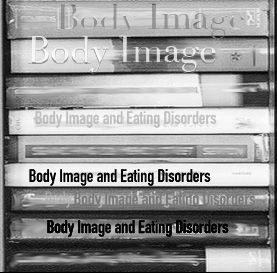What are eating disorders?
An eating disorder is an illness that causes serious disturbances to your everyday diet, such as eating extremely small amounts of food or severely overeating or binge eating.
A person with an eating disorder may have started out just eating smaller or larger amounts of food, but at some point, the urge to eat less or more spiraled out of control.
Severe distress or obsessive concern about body weight or shape may also characterize an eating disorder.
Eating disorders frequently appear during the teen years or young adulthood but may also develop during childhood or later in life. Eating disorders affect both men and women.
What are the different types of eating disorders?
Anorexia nervosa
Anorexia nervosa is characterized by:
- Extreme thinness (emaciation)
- A relentless pursuit of thinness and unwillingness or inability to maintain a normal or healthy weight
- Intense fear of gaining weight
- Distorted body image, a self-esteem that is heavily influenced by perceptions of body weight and shape, or a denial of the seriousness of low body weight
- Lack of menstruation among girls and women
- Extremely restricted eating.
Many people with anorexia nervosa see themselves as overweight, even when they are clearly underweight. Eating, food, and weight control become obsessions. People with anorexia nervosa typically weigh themselves repeatedly, portion food carefully, and eat very small quantities of only certain foods. Some people with anorexia nervosa may also engage in binge-eating followed by extreme dieting, excessive exercise, self-induced vomiting, and/or misuse of laxatives, diuretics, or enemas. Some who have anorexia nervosa recover with treatment after only one episode. Others get well but have relapses. Still others have a more chronic, or long-lasting, form of anorexia nervosa, in which their health declines as they battle the illness.
Other symptoms may develop over time, including:
- Thinning of the bones (osteopenia or osteoporosis)
- Brittle hair and nails
- Dry and yellowish skin
- Growth of fine hair all over the body (lanugo)
- Mild anemia and muscle wasting and weakness
- Severe constipation
- Low blood pressure, slowed breathing and pulse
- Damage to the structure and function of the heart
- Brain damage
- Multiorgan failure
- Drop in internal body temperature, causing a person to feel cold all the time
- Lethargy, sluggishness, or feeling tired all the time
- Infertility.
Bulimia nervosa
Bulimia nervosa is characterized by recurrent and frequent episodes of eating unusually large amounts of food and feeling a lack of control over these episodes. This binge-eating is followed by behavior that compensates for the overeating such as forced vomiting, excessive use of laxatives or diuretics, fasting, excessive exercise, or a combination of these behaviors.
Unlike anorexia nervosa, people with bulimia nervosa usually maintain what is considered a healthy or normal weight, while some are slightly overweight. Like people with anorexia nervosa, they often fear gaining weight, want desperately to lose weight, and are intensely unhappy with their body size and shape. Usually, bulimic behavior is done secretly because it is often accompanied by feelings of disgust or shame. The binge-eating and purging cycle happens anywhere from several times a week to many times a day.
Other symptoms include:
- Chronically inflamed and sore throat
- Swollen salivary glands in the neck and jaw area
- Worn tooth enamel, increasingly sensitive and decaying teeth as a result of exposure to stomach acid
- Acid reflux disorder and other gastrointestinal problems
- Intestinal distress and irritation from laxative abuse
- Severe dehydration from purging of fluids
- Electrolyte imbalance (too low or too high levels of sodium, calcium, potassium and other minerals) which can lead to heart attack.
Binge-eating disorder
With binge-eating disorder a person loses control over his or her eating. Unlike bulimia nervosa, periods of binge-eating are not followed by purging, excessive exercise, or fasting. As a result, people with binge-eating disorder often are over-weight or obese. People with binge-eating disorder who are obese are at higher risk for developing cardiovascular disease and high blood pressure. They also experience guilt, shame, and distress about their binge-eating, which can lead to more binge-eating.
What to do if your relationship with food seems unmanageable or excessive?
Eating disorders are real, treatable medical illnesses and frequently coexist with other difficulties such as depression, anxiety and stress, low self esteem, substance misuse, and other self harming behaviour.
The most widely researched treatments for eating disorders are based on cognitive-behavioral procedures, however, many people do not respond well to cognitive-behavioral treatments alone.
Approaches that incorporate mindfulness practice, with a goal of increasing general psychological well-being and physiological and emotional self-regulation, are found to be particularly well-suited for those struggling with eating disorders.
Making choices about what and how we eat is such an ever-present part of daily life. If you have a history of trying multiple diets, of struggling with body image and self esteem, and difficulty in trusting your own judgement in regard to food and eating, a mindfulness-based approach to eating and body image offers a more permanent, enduring approach.
A mindfulness-based approach encourages the ability to simply observe feelings, behaviors and experiences without judgement, and with time, patience, and commitment to your own well-being, allows for the development of a wiser and more balanced relationship with your self, your body, and with food.
If you would like to learn more about a mindfulness-based approach to eating, make an appointment for individual counselling, please contact Diana.

